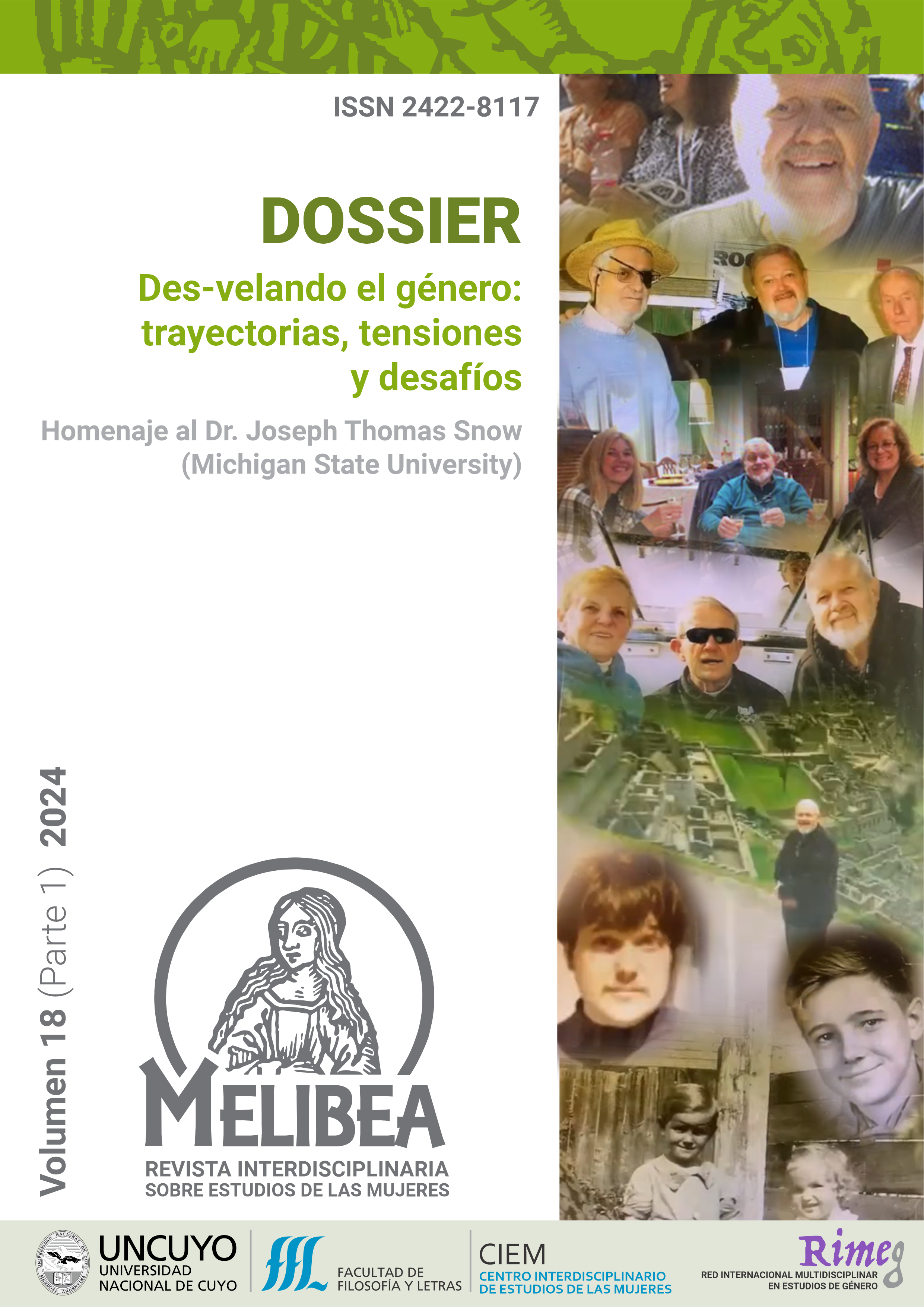Women and the Female Body in Bernardo de Gordon’s Lilium Medicine. A Medical Compendium from 1303
Keywords:
Medieval Medicine, Humoralism, Natural Philosophy, WomanAbstract
The goal of this work is to analyze the treatment given to the female body in Bernardo de Gordon´s Lilium medicine, a text of clinical practice, written in 1303. According to humoralism, women differed from men in degree of heat. She was colder and more humide than the male, which represented an inferiority to the male and was manifested itself from the embryonic phase, continuing throughout life. As a consequence, it was understood that women were exposed to less resistance to exercise, a greater capacity to transmit diseases and some even had the ability to generate them in weak people or children. Starting in the 13th century, an interest in the correction of body imperfections arose, but the same standards were not used for men and women; losing hair, displaying blemishes or hair removal in different areas of the body were nor treated in the same way by doctors. This work raises the reflection of these issues in the clinical field, starting from the systematic study of a very popular compendium during the late Middle Ages, which was the subject of numerous translations into vernacular languages.
References
Alberto Magno. (1488). Physica, Venecia.
Aristóteles. (1966). De generatione animalium. (Trad. Guillelmi de Moerbeke, Ed. H. Joan Drossaart). Desclée de Brouwer. [Trabajo original traducido por Moeerbeke c. 1270].
Arnaldi de Villanova. (1985). Tractatus de amore heroico (Ed. Michael R. McVaugh). Universidad de Barcelona. [Trabajo original escrito c.1260].
Avicena. (1507). Liber canonis. Venecia.
Cadden, J. (1991). Meanings of Sex Difference in the Middle Ages. Cambridge University Press.
De Chauliac, G. (1987). Inventarium sive chirurgia magna (Ed. Michael R. McVaugh). Brill. [Trabajo original escrito en 1363].
De Gordon, B. (1542). Lilium medicine. París.
De Lorris, G. y de Meum, J. (2013). Le Roman de la Rose (Ed. André Mary). Gallimard. [Trabajo original escrito c. 1230].
Demaitre, L. (2001). Skin and the City: Cosmetic Medicine as an Urban Concern. En E. Glaze y Brian K. Nance (Eds.), Between Text and Patient (pp. 97-120). Sismel, E. Del Galluzo.
Demaitre, L. (2007). Leprosy in Premodern Medicine. A Malady of the Whole Body. The Johns Hopkins University Press.
Green, M. (1987). The “De genecia” Attributed to Constantine the African. Speculum, 62(2), 299-323.
Green, M. (2001). (Ed.). Trotula: A Medieval Compendium of Women´s Medicine. University of Pennsylvania Press.
Haly Ibn Ridwan. (1483). Commentum in microtegni Galieni. En Articella, fols. 151ra-210ra. Venecia.
Jacquart, D. y Thomasset, C. (1985). Sexualité et savoir médical au Moyen Age. Presses Universitaires de France.
Mazo-Karras, R. (1996). Common Women: Prostitution and Sexuality in Medieval England. Oxford Universitary Press.
Salmón, F. y Cabré, M. (1998). Fascinating Women: The Evil Eye in Medical Scholasticism. En R. French, J. Arrizagalaba y L. García-Ballester (Eds.), Medicine from the Black Death to the French Disease (pp. 53-85). Ashagate Plublishing.
Unamuno, M. (1982). Del sentimiento trágico de la vida (3ª ed.). Espasa-Calpe.
Downloads
Published
How to Cite
Issue
Section
License

This work is licensed under a Creative Commons Attribution-NonCommercial 4.0 International License.
Esta obra está bajo una Licencia Creative Commons Atribución-NoComercial 4.0 Internacional.
Los/as autores/as que publican en esta revista están de acuerdo con los siguientes términos:
1. Los/as autores conservan los derechos de autor y garantizan a la revista el derecho de ser la primera publicaci´´ón del trabajo bajo una licencia Creative Commons Atribución-NoComercial 4.0 Internacional. Por esto pueden compartir el trabajo con la referencia explícita de la publicación original en esta revista.
2. Revista Melibea permite y anima a los autores a difundir la publicación realizada electrónicamente, a través de su enlace y/o de la versión postprint del archivo descargado de forma independiente.
















